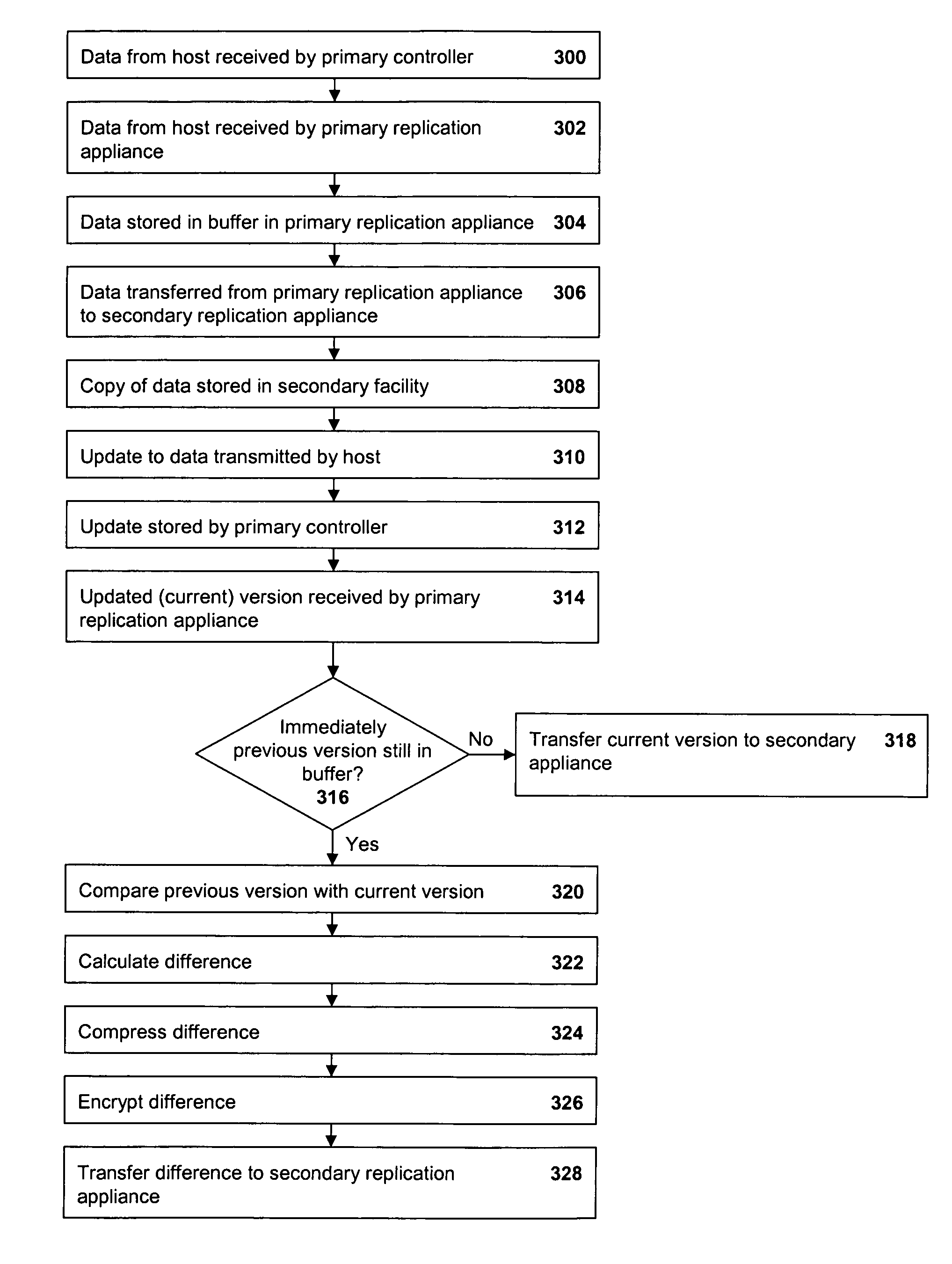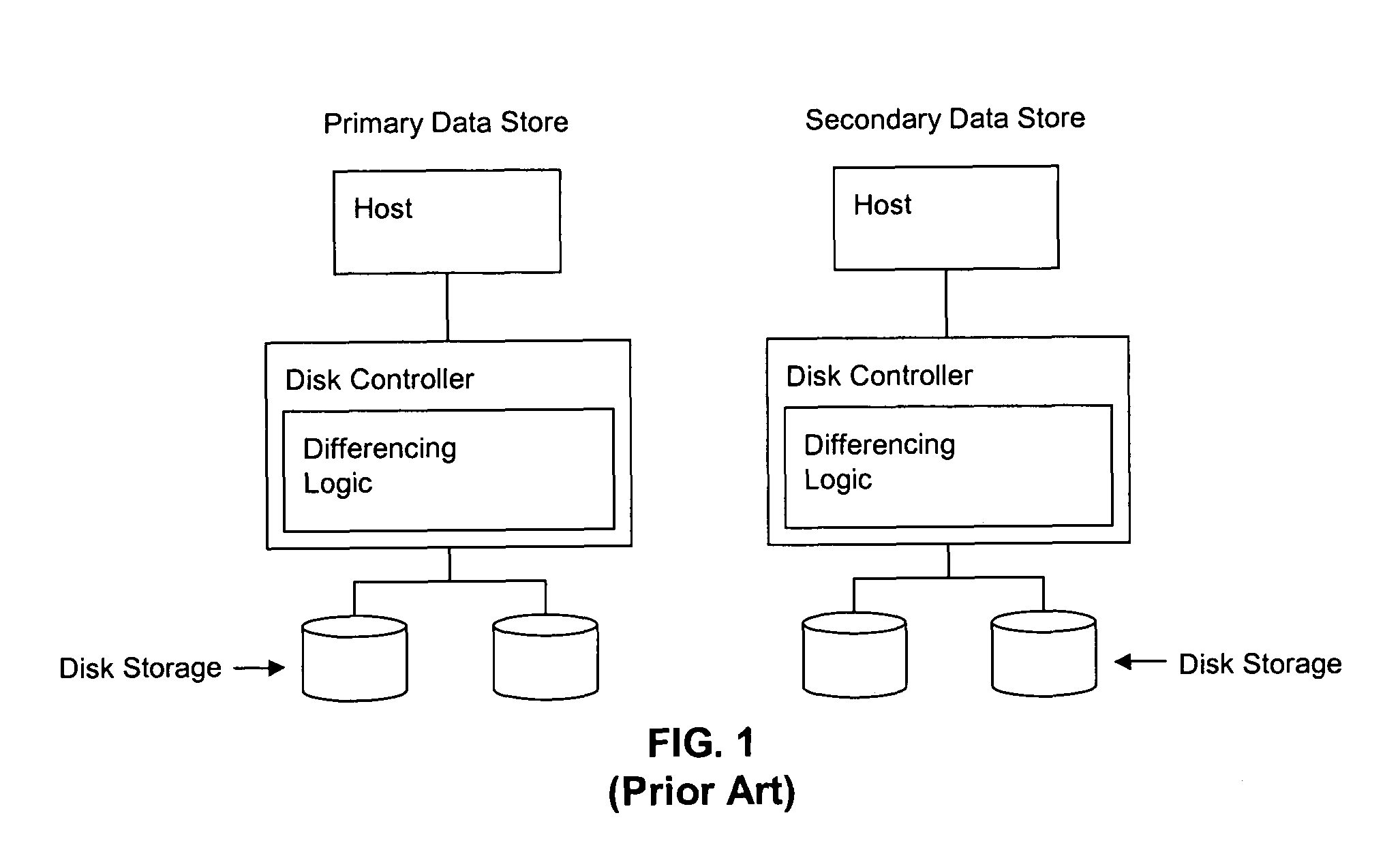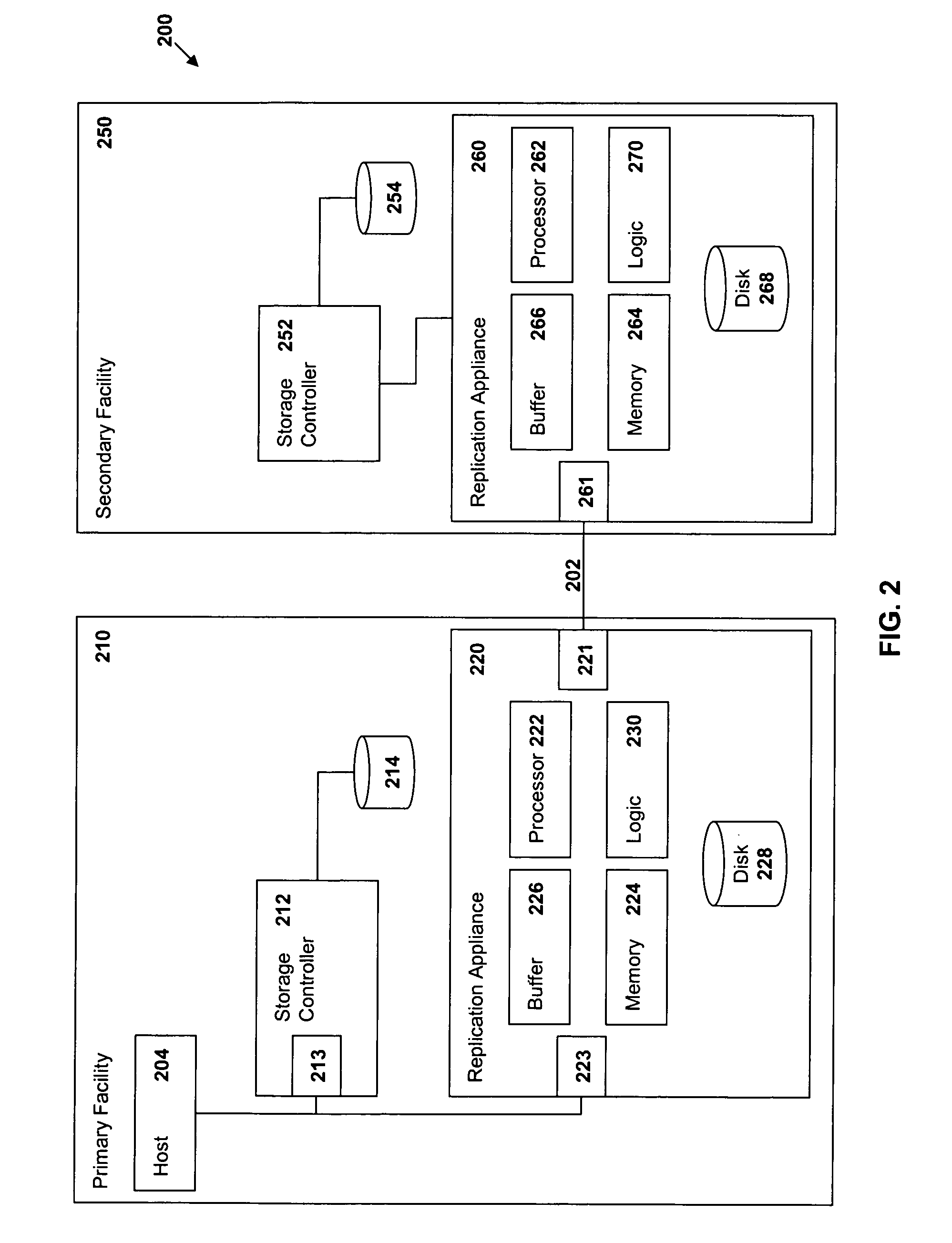Transferring data from a primary data replication appliance in a primary data facility to a secondary data replication appliance in a secondary data facility
a data replication and secondary data technology, applied in the field of data transfer over a data link, can solve the problems of requiring huge amounts of bandwidth for various types of remote copy, and achieve the effects of minimizing bandwidth usage, reducing workload on storage controllers, and not adversely affecting the workload of storage controllers or hosts
- Summary
- Abstract
- Description
- Claims
- Application Information
AI Technical Summary
Benefits of technology
Problems solved by technology
Method used
Image
Examples
Embodiment Construction
[0013]FIG. 2 is a block diagram of a data replication system 200 of the present invention. The system 200 includes a primary data facility 210 and a secondary data facility 250. Both facilities 210 and 250 include a storage controller 212, 252 coupled to a data storage device or array 214, 254. Both facilities 210, 250 of the present invention further include a replication appliance 220, 260, interconnected to each other by way of appropriate interfaces 221, 261 directly or through a network, represented by the connection 202. The storage controller 212 and the replication appliance 220 of the primary data facility 210 are operatively coupled through respective interfaces 213, 223 to a host device 204.
[0014]The primary and secondary, replication appliances 220, 260 both include: a processor 222, 262; a memory 224, 264 for storage of software instructions to be executed on the processor 222, 262; and a first-in-first-out (FIFO) buffer 226, 266 for temporary storage of data. The appli...
PUM
 Login to View More
Login to View More Abstract
Description
Claims
Application Information
 Login to View More
Login to View More - R&D
- Intellectual Property
- Life Sciences
- Materials
- Tech Scout
- Unparalleled Data Quality
- Higher Quality Content
- 60% Fewer Hallucinations
Browse by: Latest US Patents, China's latest patents, Technical Efficacy Thesaurus, Application Domain, Technology Topic, Popular Technical Reports.
© 2025 PatSnap. All rights reserved.Legal|Privacy policy|Modern Slavery Act Transparency Statement|Sitemap|About US| Contact US: help@patsnap.com



